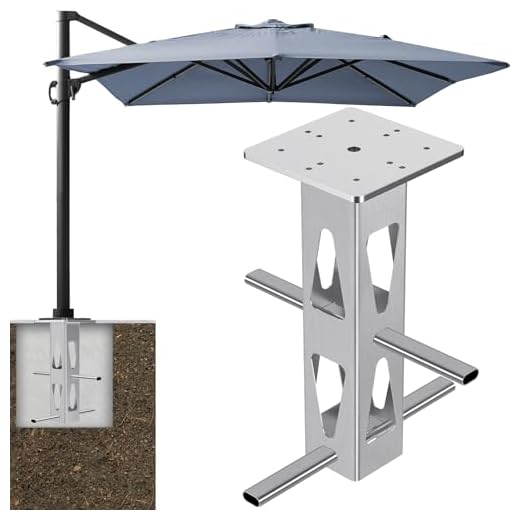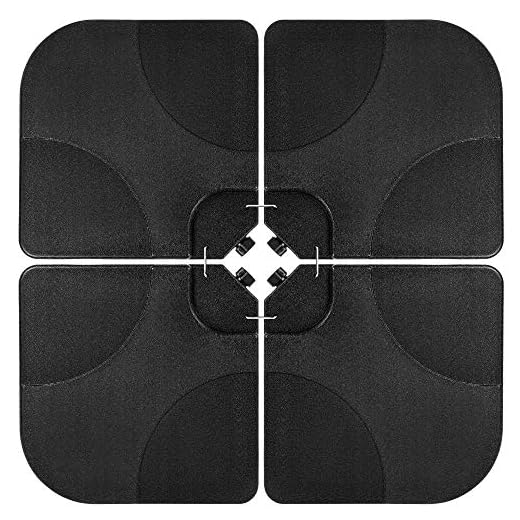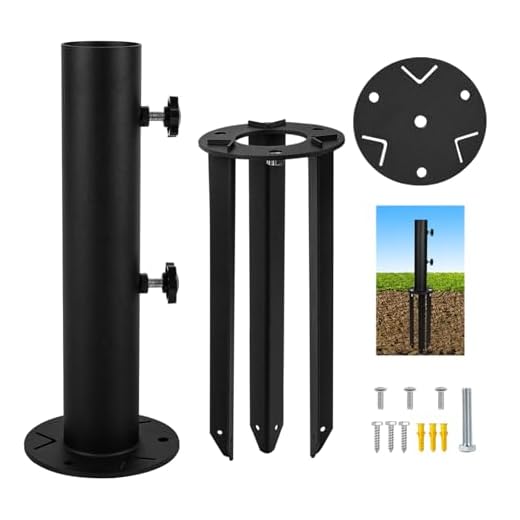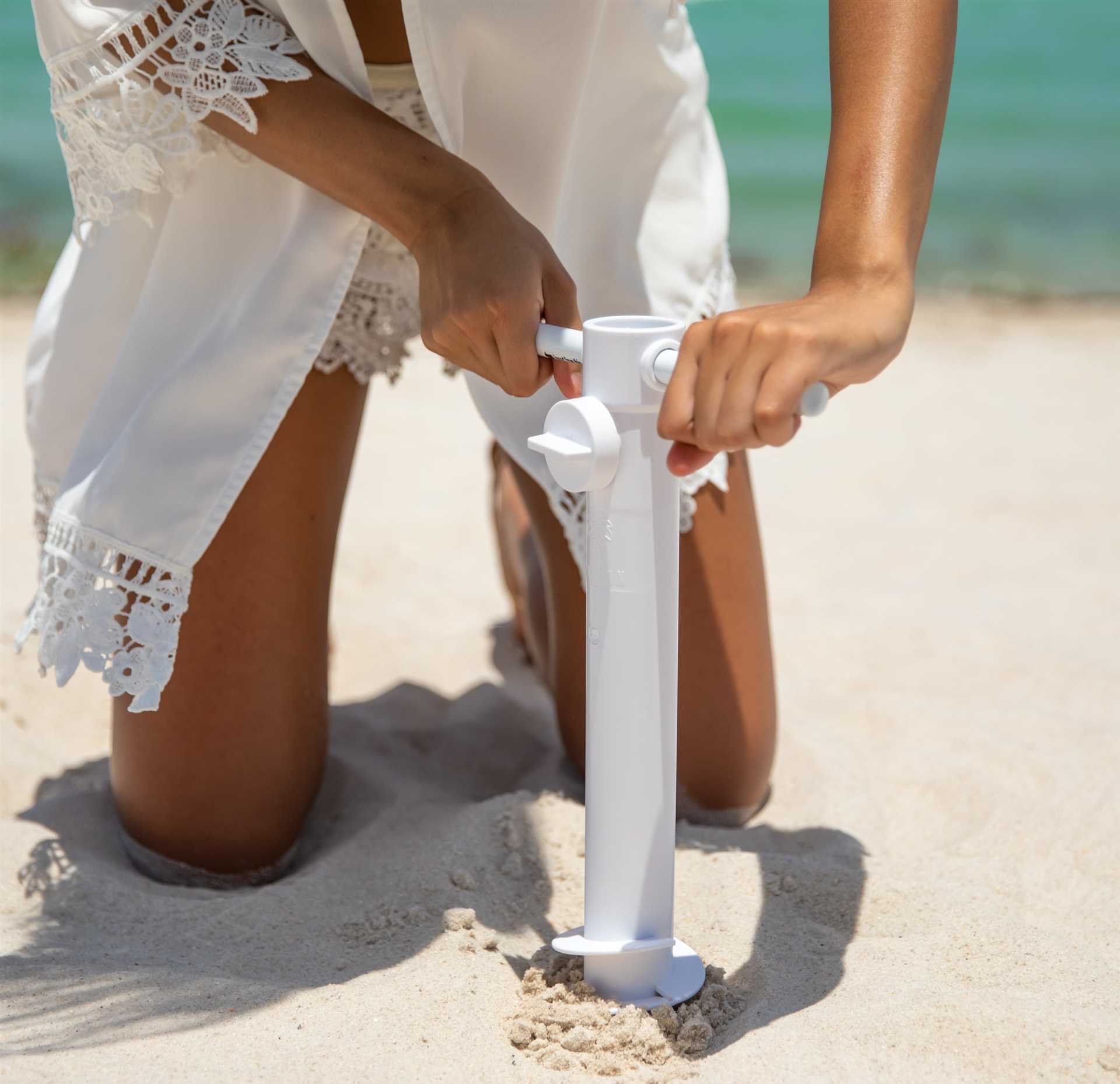




Using a heavy base is one of the most reliable methods to stabilize your outdoor shade structure. A weighted base filled with sand or water can keep it upright during breezy conditions. This article discusses various techniques to ensure your sunshade remains steady, providing practical advice for homeowners and outdoor enthusiasts.
You’ll find solutions tailored to different environments, from patios to gardens. Whether you prefer a portable option for mobility or a permanent fixture for seasonal use, the recommendations here will help you choose the right method based on your specific needs.
In addition to weighted bases, we explore alternatives like ground stakes and anchoring systems, along with tips for maintenance to prolong the life of your outdoor shelter. By following these guidelines, you can enjoy your outdoor space without the worry of an unstable canopy.
Best Way to Anchor Patio Umbrella
For stability and safety, utilizing a weighted base is highly recommended. This method prevents your shade structure from tipping over or being swept away by strong winds. Choose a base that matches the size of the canopy for optimal support.
Another effective strategy involves securing the pole within a table. Many outdoor tables are designed with a central hole specifically for this purpose. This not only adds stability but also enhances the aesthetics of your outdoor space.
Considerations for Stability
When selecting a method to secure your shade structure, consider the following:
- Weight: Ensure that the base or the table can support the height and width of the canopy.
- Material: Opt for durable materials that can withstand various weather conditions.
- Portability: If you plan to move your setup frequently, choose lightweight options that are easy to transport.
In addition to these methods, using ground anchors can provide extra security, especially in windy areas. These anchors can be driven into the ground and attached to the pole for added stability.
- Assess the local weather conditions.
- Choose a suitable base or table for your setup.
- Install ground anchors if necessary.
Ensuring that your outdoor shading solution is securely positioned will enhance your enjoyment of your garden or patio area.
Choosing the Right Base for Stability
For ensuring a reliable structure, select a base that offers sufficient weight and stability. A heavier base will resist wind movement, preventing any risk of tipping over. Materials such as concrete, granite, or filled plastic are recommended due to their ability to provide the necessary support.
Consider the dimensions and weight of the canopy. A larger, wider canopy typically requires a sturdier base. Ensure that the base fits the pole diameter securely; a snug fit prevents wobbling and enhances overall stability.
Types of Bases
- Weighted Bases: These are often filled with water or sand and can be easily moved when needed.
- Freestanding Bases: Heavy and stable, they are ideal for permanent setups.
- Table Bases: Designed to fit under a table, they can serve dual purposes, providing both functionality and support.
In addition to weight, consider the design of the base. A wider footprint distributes weight more evenly, reducing the risk of movement. If using a portable option, ensure it can be securely locked in place.
Inspect the weather conditions in your area. In regions with frequent gusts, investing in a more robust solution is wise. Regularly check the condition of the base and replace it if any wear or damage occurs to maintain safety.
Weight Options for Securing Your Umbrella
Choosing the right weight for stabilizing your outdoor shade structure is essential for maintaining its integrity and functionality. Various options are available to ensure that the structure remains upright, even during windy conditions or inclement weather.
Heavy bases made from materials like concrete or steel provide a robust solution. These materials offer significant resistance against tipping, ensuring that your shade remains secure throughout its use. Additionally, portable weights can be filled with water or sand, allowing for easy transport and storage when not in use.
Types of Weights
- Concrete Bases: Highly durable and effective, these bases often come in various shapes and sizes.
- Steel Plates: These offer a slim profile and can handle substantial wind loads.
- Water-Filled Weights: Easily transported and can be filled on-site for convenience.
- Sand-Filled Weights: Similar to water options but provide additional stability when completely filled.
When selecting a weight, consider the size and height of the shade structure. A larger canopy will typically require a heavier base to prevent tipping. As a guide, a weight of at least 50 pounds is often recommended for smaller canopies, while larger structures may need weights exceeding 100 pounds.
Ensure that the weight fits securely with the base of your shade. Some designs feature notches or grooves to hold the weight in place, preventing any sliding or movement that could compromise stability. Regularly check the setup to confirm that everything remains secure, especially after heavy winds or storms.
Installing a Patio Umbrella with a Stand
To ensure stability when using a large sunshade, proper installation with a stand is essential. Begin by selecting a stand that provides adequate weight and support for your specific model. A sturdy base will prevent tipping and ensure safety during windy conditions.
Position the stand on a flat and stable surface, ideally on a patio or deck. If using on grass, make sure it is securely placed to avoid any wobbling. Once the stand is in place, insert the pole of the sunshade into the designated holder on the stand. Tighten any securing mechanisms to hold it firmly in place.
Additional Tips for Installation
- Weight Consideration: Choose a stand that has enough weight to counterbalance the size of the shade. Generally, heavier bases are more effective.
- Adjustable Poles: If possible, opt for a stand with an adjustable height feature to customize the shade’s position based on the sun’s angle.
- Securing Mechanisms: Ensure that any clamps or screws used to secure the pole are tightened adequately to prevent movement.
- Weather Awareness: When not in use during storms or high winds, consider removing the shade from the stand to prevent damage.
Following these guidelines will help to create a safe and enjoyable outdoor space, maximizing comfort while minimizing risks associated with unstable installations.
Alternative Methods for Windy Conditions
For securing outdoor shade structures in gusty weather, consider the use of weights or sandbags. These can provide additional stability and prevent tipping. Opt for heavy-duty options that can withstand stronger winds.
Another solution is to utilize a ground spike or a base that can be anchored into the ground. This method is particularly effective when dealing with high winds, as it offers a more permanent solution compared to traditional bases.
Additional Strategies
- Weighted Bases: Fill a base with sand, water, or concrete for added weight.
- Ground Spikes: Install a spike in the ground to secure the pole directly.
- Windbreaks: Use screens or hedges to reduce wind exposure.
- Adjustable Canopies: Choose models that can be tilted or retracted in high winds.
Implementing these techniques can significantly enhance the stability of your shade solution. Ensure that all components are regularly checked for wear and tear to maintain safety and functionality.
Best way to anchor patio umbrella
Features
| Part Number | FUB41B |
| Model | FUB41B |
| Color | Black |
| Release Date | 2023-12-22T00:00:01Z |
Features
| Part Number | DBUBH-001-2 |
| Model | DBUBH-001-2 |
| Color | Silver with 2 Reinforcement Tubes |
Features
| Part Number | YT-00102670 |
| Model | YT-00102670G |
| Color | Black |
| Size | 41×41×3in |
Features
| Part Number | SKY3257 |
| Model | SKY3257 |
| Color | Black |
| Size | 4-Piece |
Features
| Part Number | Deck Mount Umbrella Holder |
| Model | Patio Umbrella Stand Base |
| Color | black |
Video:
FAQ:
What are the best types of bases for securing a patio umbrella?
Choosing the right base for your patio umbrella is key to ensuring its stability. Common options include weighted bases filled with sand or water, which provide substantial support. There are also concrete bases, which are heavier and more durable, making them ideal for larger umbrellas. Additionally, some users opt for portable bases with wheels for easy movement and storage. Always match the base weight to the umbrella size to avoid tipping.
How do I prevent my patio umbrella from blowing away on a windy day?
To prevent your patio umbrella from being affected by wind, consider several strategies. First, ensure that you have a heavy and stable base that can withstand gusts. You can also use wind-resistant umbrellas that feature a vented canopy, allowing air to flow through without causing lift. Additionally, it’s advisable to close the umbrella during particularly windy weather. If your umbrella has a tilt feature, adjusting it can also help reduce wind resistance.
Can I use my patio umbrella without a base or stand, and what are the risks?
Using a patio umbrella without a base or stand is generally not recommended. While some people might try to anchor it using a table or other structures, this can lead to instability. The risks include the umbrella tipping over, which can cause injury to people nearby or damage to property. For safety and longevity of your umbrella, investing in a proper base is the best approach. It provides the necessary support and ensures that the umbrella remains upright in various weather conditions.








